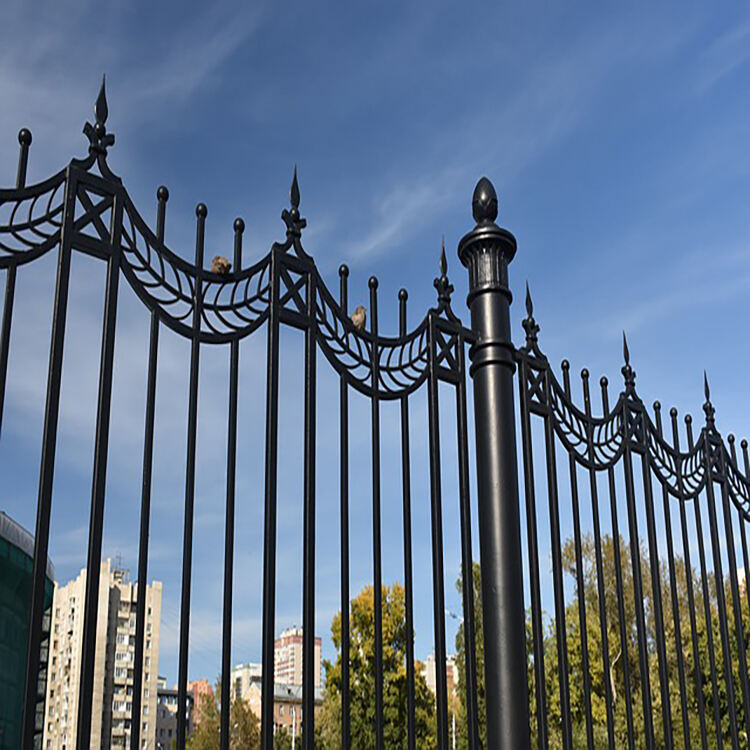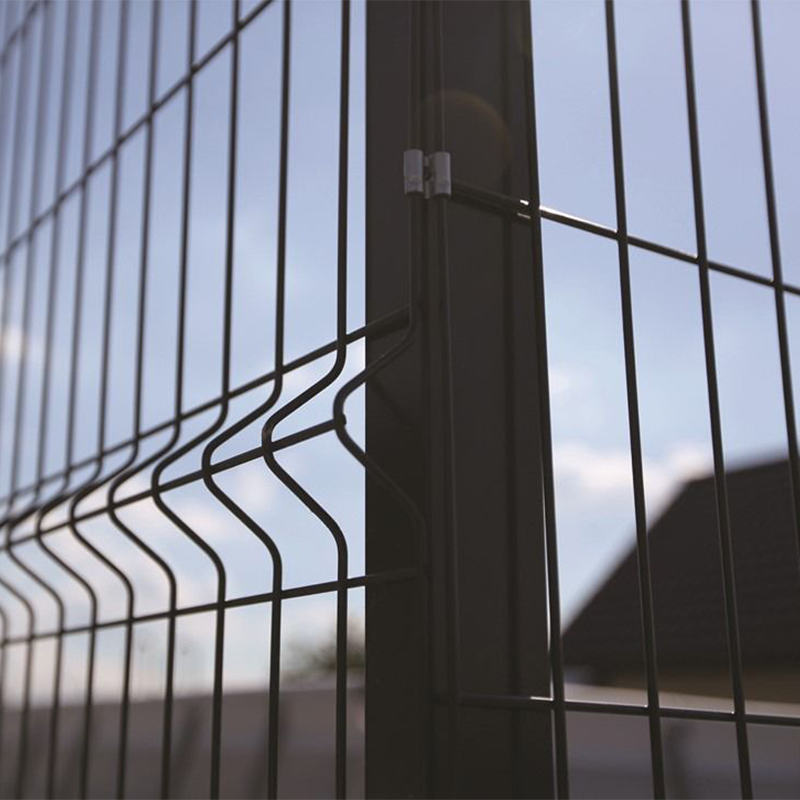Key Challenges for Metal Fences in Coastal Areas
Saltwater Corrosion Risks
Saltwater really eats away at metal fences along coastlines, making them deteriorate much faster than normal. Studies indicate corrosion happens about five times quicker near the ocean compared to places further inland where there's less salt and moisture hanging around. Iron fences and those made from plain old steel without any treatment tend to suffer the worst damage from this salty assault. We've seen cases where these types of fences begin showing rust spots and structural weakness just a year after being put up in areas close to the sea. If someone wants their fence to last longer in these harsh conditions, going for materials that resist corrosion makes all the difference. Galvanized steel or stainless steel options work well here. Applying protective coatings periodically also helps keep the salt at bay and extends the life of the fence significantly.
Wind Resistance and Structural Demands
The coast brings strong winds that really test how well metal fences hold up over time. Storms aren't uncommon here either, with gusts regularly hitting between 75 to 100 mph when things get rough. That's why good engineering matters so much for fences in these regions. Most building standards suggest making sure fence posts are extra sturdy and digging them into the ground deeper than normal. We actually saw this work firsthand in one project along the shore where they drove posts deep into concrete footings. This made all the difference when hurricane force winds hit last summer. If someone wants their fence to last through multiple seasons of harsh weather, talking to a structural engineer early on makes sense. These professionals know exactly what calculations to run based on local wind patterns and soil conditions to create something both safe and long lasting.
Impact of Humidity on Metal Integrity
Moisture in the air really takes a toll on metal fences along coastlines where saltwater mixes with constant dampness. Even metals marketed as rust proof start showing signs of corrosion when exposed to consistently high humidity. We've seen through field observations that once the air gets above about 60% humidity, rust spreads much faster than normal, which weakens the whole structure after years of exposure. Homeowners dealing with these conditions should think about adding protective coatings and setting up some kind of drainage system beneath the fence line. Regular inspections and applying fresh防腐 treatments every few months go a long way toward fighting off the damage caused by all that moisture. Proper airflow around metal parts also matters quite a bit for extending how long these fences last before needing replacement.
Aluminum Fence Panels: Optimal Coastal Performance
Natural Rust Resistance of Aluminum
Aluminum fence panels really shine when it comes to resisting rust, which makes them great choices for places near the ocean. Steel and iron fences tend to get all corroded pretty fast around saltwater, but aluminum actually creates its own protective coating through oxidation that stops rust from taking hold. This natural defense means these fences last much longer even when exposed to tough coastal weather. Take the Gulf Coast area for instance many folks there notice how iron fences start showing wear and tear about five times quicker compared to aluminum ones. Most people who've installed aluminum fencing report being impressed by how well they hold up over time. Not only do they keep looking good year after year, but they also maintain their strength without needing constant repairs or replacements.
Lightweight Design for Storm Resilience
Aluminum fences resist rust pretty well and they're light too, which actually helps them stand up better against bad storms. This makes a real difference in places near the coast where strong winds blow all the time. Because aluminum panels aren't so heavy, there's less pressure from the wind pushing against them when storms hit, so they tend to stay intact longer. We've seen this happen in several spots along the Atlantic Coast where hurricanes regularly make landfall. Aluminum fences there have held up surprisingly well even when winds reach around 80 miles per hour, though obviously some minor dents might occur. For folks living in areas that get hammered by severe weather, going with aluminum fencing makes sense both practically and economically since it keeps working as a privacy barrier and protects property over many years despite what Mother Nature throws at it.
Low-Maintenance Advantages
Aluminum fencing stands out because it really doesn't need much maintenance at all, saving money in the long run. Most other fence materials demand constant attention like painting or dealing with rust problems, but aluminum just keeps looking good with hardly any effort. Homeowners who've installed these fences often mention how easy they are to take care of. A quick rinse with water usually does the trick when dirt builds up. According to some recent studies, around 80 percent of people who live with aluminum fences would tell others about them due to how hassle free they are and the money saved down the road. For folks near the coast where salt air can wreak havoc on regular fences, this kind of durability becomes even more important.
Galvanized Steel Fence Panels: Heavy-Duty Protection
How Galvanization Combats Coastal Corrosion
Galvanizing steel fence panels is really important when it comes to fighting off corrosion near the coast. Basically what happens is they coat the steel with zinc, creating this protective shield that stops salt air from eating away at the metal. Fences treated this way last way longer than regular steel or other materials exposed to sea spray. Groups like ASTM International have set guidelines about how thick the zinc layer needs to be for proper protection in these salty environments. When manufacturers follow these specs, the galvanized fences stay strong and look good too, holding up against wind, rain, and all sorts of harsh conditions along the shoreline without falling apart after just a few years.
Reinforced Strength Against High Winds
Galvanized steel fences have extra strong construction features that can handle the brutal wind conditions found along coastlines. Their solid build means they won't bend out of shape when big storms hit, something that matters a lot for keeping properties protected. When installing these fences, contractors typically drive posts deeper into the ground and leave some space between panels so they can move without breaking. This approach makes all the difference during those intense wind events where regular fencing might fail. Property owners who live near the ocean know from experience that these steel fences stay standing through hurricane-force winds, which gives them confidence their land will remain secured no matter what nature throws at it.
Longevity vs. Maintenance Trade-offs
Galvanized steel fences definitely stand out when it comes to lasting power and structural integrity, even though there's always going to be some give and take between how long they last versus what kind of upkeep they need. When we look at the big picture over many years, these fences tend to beat out regular wood options or plain metal alternatives pretty consistently. The main thing people forget is that keeping galvanized steel in good shape means checking on it now and then, maybe touching up spots where rust starts to creep in after salt air exposure. Sure, getting one installed might cost more initially compared to cheaper alternatives, but think about all those times neighbors have had to replace their wooden fences every few years while the galvanized ones just keep standing strong. For folks living near beaches or coastal areas specifically, this makes total sense economically speaking despite the higher price tag upfront.
Wrought Iron Fence Panels: Aesthetic vs. Practicality
Vulnerability to Saltwater Damage
Wrought iron fences definitely look great with their old fashioned charm, but there's one big problem if you live near the ocean - they just don't stand up well against salt water corrosion. The sea air really speeds up how fast iron rusts, which means over time these beautiful fences start to break down and lose strength until parts literally fall apart. Anyone who has ever owned a wrought iron fence along the coast knows this all too well. Some research suggests that constant exposure to salt can make iron corrode anywhere from 25 to 30 percent faster than normal. That's why smart homeowners apply protective coatings and give their fences some TLC every now and then. If your property sits within reach of ocean breezes, keep this weakness in mind before deciding on fencing options. A little extra care goes a long way toward keeping those ornate designs looking good for years.
Protective Coatings for Extended Lifespan
Saltwater corrosion is a real problem for wrought iron fences near the coast, but there are ways to fight back. Protective coatings work wonders in extending how long these fences stay looking good. Powder coatings, galvanization treatments, and special anti-rust paints all form barriers against moisture and salt damage. Powder coating tends to be particularly good at this job though. Proper application makes a big difference too. Fences treated properly need less frequent touch ups and generally last much longer before needing replacement, which saves money over time. Some studies show that powder coated wrought iron can hang on for around 15 years without showing serious wear and tear. For homeowners dealing with coastal conditions, investing in quality protection upfront pays off handsomely in the long run when compared to constant repairs or early replacements.
When Iron Makes Sense for Coastal Homes
Wrought iron remains a good option for coastal homes even though it has some weaknesses, especially when looks matter most. People love how it just sits there looking elegant forever, matching almost any architectural style out there. Homeowners who want their place to stand out visually tend to go this route. Some designers actually think wrought iron adds something special to certain designs that just plain old aluminum or steel fences cant match up to. Most architects will tell anyone willing to listen that they reach for wrought iron when working on historic restorations or custom builds along the coast. There's something about balancing practical needs with wanting things to look beautiful that just works better with iron than other materials in these salty environments.
If you want to explore more about wrought iron fences, consider products that emphasize both protective coatings and aesthetic charm to ensure longevity in coastal climates. This balance of beauty and practicality is essential for maintaining the structural integrity and visual appeal of your property.
Choosing the Best Metal Panel for Your Coastline
Comparing Aluminum, Steel, and Iron Durability
Looking at how different metals hold up in coastal areas matters a lot when choosing fencing materials. Aluminum stands out because it doesn't corrode easily even after years near saltwater. That makes sense for places where humidity mixes with ocean air all year round. Steel fences are strong enough to last decades without bending or breaking, but they'll start showing rust spots within months if not properly protected by paint or other treatments. Wrought iron definitely looks great with its ornate designs, which many people love for front yards and garden enclosures. However, anyone who has installed wrought iron fencing along the coast knows firsthand how quickly those beautiful details turn into flaky messes from constant exposure to seawater and windblown salt particles.
A pros and cons list can aid decision-making:
- Aluminum - Pros: corrosion-resistant, lightweight; Cons: higher cost, less privacy with open designs.
- Steel - Pros: strong, durable with coatings; Cons: potential rust, requires regular maintenance.
- Wrought Iron - Pros: aesthetic appeal, classic design; Cons: high maintenance, corrodes rapidly in saltwater.
Cost Analysis for Coastal Environments
When looking at the costs involved in coastal fencing, there are three main things to consider: what materials will be used, how much it'll cost to install them, and what kind of ongoing maintenance will be needed. Aluminum tends to come with a bigger price tag right from the start, but folks who choose this option often find they spend less money over time since these fences can stand up pretty well against salt air and moisture without needing constant attention. Steel fencing needs special coatings applied during installation which drives up those initial costs, and then there's all the regular painting or sealing required later on too. Wrought iron looks great when first installed and might seem cheaper initially, but many property owners end up spending quite a bit keeping rust at bay through regular cleaning and touch-ups throughout the years.
Expert recommendations emphasize budgeting for durable solutions like aluminum, which minimize long-term costs despite higher initial investments. Balancing upfront spending with potential maintenance savings is key when selecting metal fence panels for coastal environments.
Climate-Specific Recommendations
Selecting metal fence panels for coastal climates should account for local environmental factors. In areas with high humidity and salt exposure, products like aluminum panels excel due to their corrosion resistance and minimal upkeep. Conversely, if aesthetics are paramount, wrought iron panels might be favored despite increased maintenance.
For colder climates, steel with proper coatings can withstand temperature variations and maintain structural integrity. Anecdotal evidence from homeowners reveals that combining aesthetic preference with practical material choice leads to the best results along coastlines. Consulting coastal living experts can further refine recommendations to suit specific regional demands.



